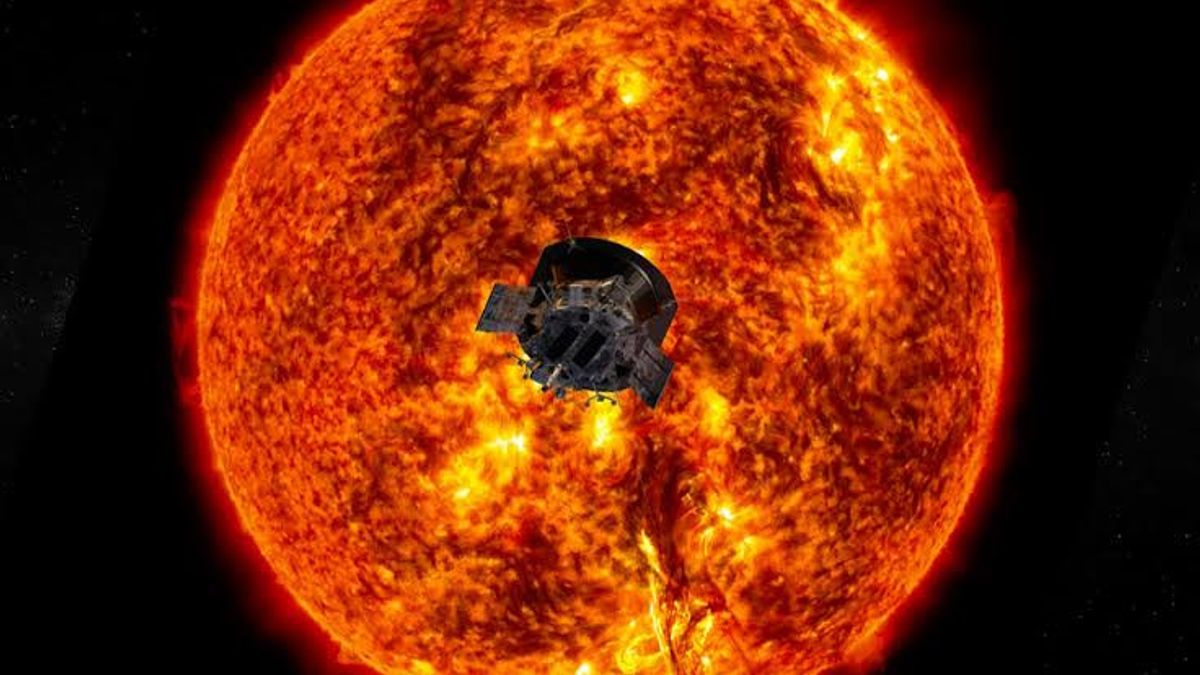JAKARTA - After NASA 3 years ago after the Parker Solar Probe was launched, now he has managed to touch the Sun. The spacecraft will be the first to touch the Sun.
The Parker Solar Probe has successfully flown through the Sun's corona, or upper atmosphere, to sample the particles and magnetic fields of stars in the Solar System.
"The Parker Solar Probe touching the Sun is a monumental moment for solar science and a truly remarkable achievement", said Thomas Zurbuchen, associate administrator for NASA's Science Mission Directorate.
"This milestone not only gives us deeper insight into the evolution of our Sun and its impact on our solar system, but everything we learn about our own stars also teaches us more about stars in the rest of the universe."
The research has been published in Physical Review Letters. For information, the Parker Solar Probe was launched in 2018 and began to rotate closer to the Sun. Scientists, including the astrophysicist of the same name Eugene Parker, wanted to answer the fundamental question of how the solar wind, flowing out of it, could throw energetic particles across the Solar System.
Citing CNN International on Thursday, December 16, it is known that the Sun's corona is much hotter than the actual surface of the star, and the Parker spacecraft can provide more insight into why. The Corona has a temperature of one million degrees Kelvin (1,800,000 degrees Fahrenheit) at its hottest.
While the surface temperature is around 6,000 Kelvin (10,340 degrees Fahrenheit). In this regard, the spacecraft has revealed surprising discoveries about the Sun, including the last 2019 discovery of magnetic zigzag structures in the solar wind called switchbacks.
Now, thanks to the Parker spacecraft's recent close approach to the Sun, it will help scientists determine that this shift originates from the Sun's surface.
Before the Parker Solar Probe mission is complete, it will make 21 close approaches to the Sun over another seven years. The probe will orbit within 3.9 million miles of the Sun's surface in 2024, closer to the star than Mercury, the closest planet to the Sun.
As far as it sounds, the researchers described this with the probe sitting on a four-yard line of a football field and the Sun being the end zone.
At its closest to the Sun, a 4½-inch thick carbon-composite solar visor must withstand temperatures approaching 2,500 degrees Fahrenheit. However, the interior of the spacecraft and its instruments will remain at a stable room temperature.
"Flying so close to the Sun, the Parker Solar Probe is now sensing conditions in the magnetically dominated layer of the Sun's atmosphere, the corona that we've never had before", said Parker project scientist, Nour Raouafi.
SEE ALSO:
"We see evidence of being in the corona in magnetic field data, solar wind data, and visuals in images. We can actually see spacecraft flying through the observable coronal structures during a total solar eclipse", he added.
Parker Solar Probe Will Continue Its Mission
What's more, Parker is likely to be in the right place at the right time during a future flyby as the Sun's 11-year cycle causes it to heat up with activity over the next few years.
Every 11 years, the Sun completes a cycle of calm activity and solar storms begin a new cycle. It should be noted, it is very important to understand the solar cycle because space weather is entirely dependent on the Sun, eruptions such as solar flares and coronal mass ejection events can impact power grids, satellites, GPS, airlines, rockets, and astronauts in space.
The most recent solar cycle, which began in December 2019 has been predicted to peak in July 2025, meaning an increase in solar activity. This means that the outer edge of the Sun's corona will expand and Parker will likely spend more time flying through the Sun's outer atmosphere.
The English, Chinese, Japanese, Arabic, and French versions are automatically generated by the AI. So there may still be inaccuracies in translating, please always see Indonesian as our main language. (system supported by DigitalSiber.id)


















